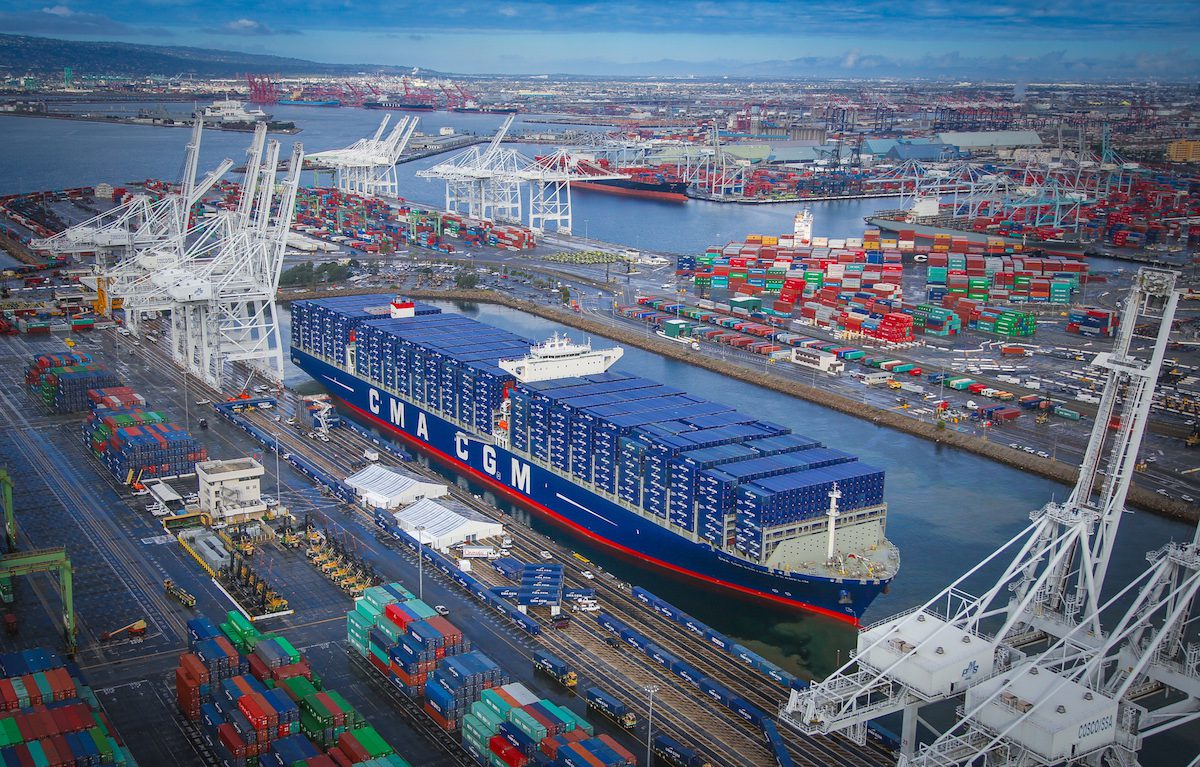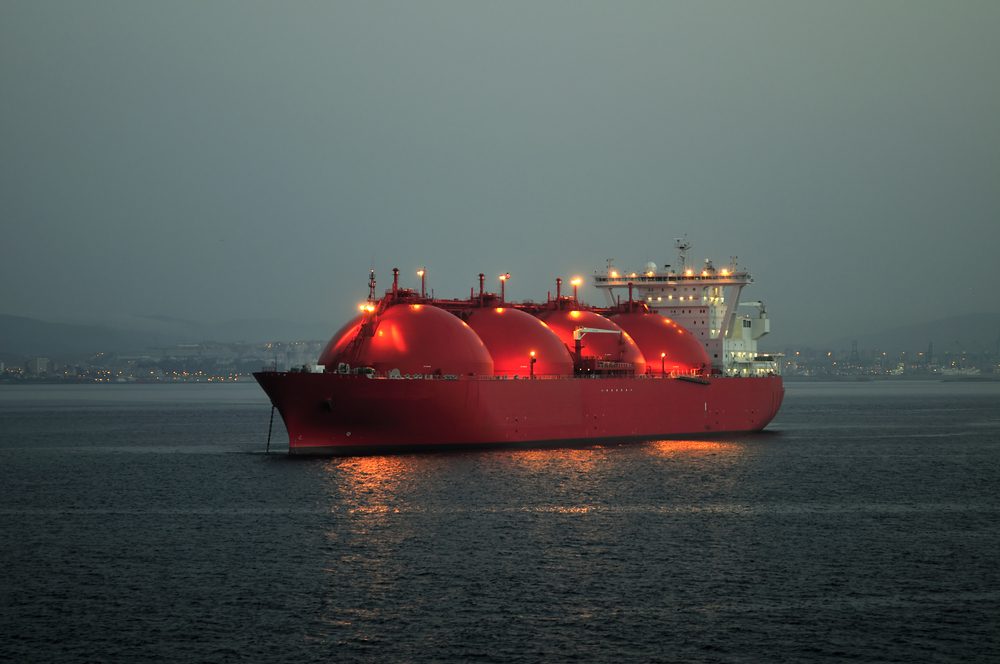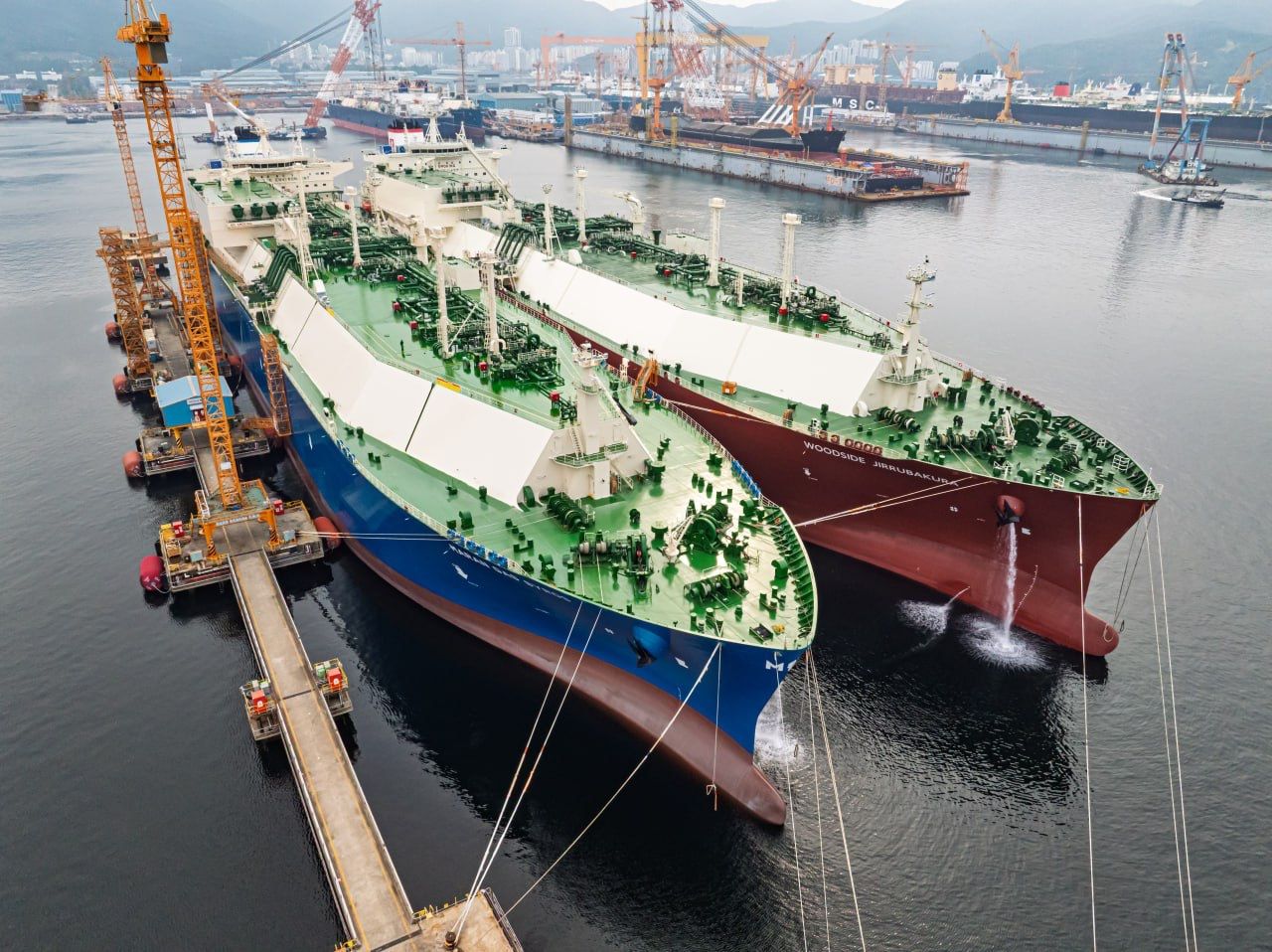CMA CGM Benjamin Franklin at the port of Long Beach for its inauguration in February. Photo credit: Port of Long Beach
French container shipping company CMA CGM has confirmed that starting in the end of May it will deploy six 18,000 TEU ‘megaships’ between Asia and U.S. west coast ports.
The ships will be the largest to call regularly in North America.
The company says the decision to deploy its ‘flagship fleet’ is in line with the company’s growth strategy in the United States and around the world, calling the trans-Pacific market “the most active and dynamic market to date”.
The decision follows 399-meter long CMA CGM Benjamin Franklin’s two visits to the U.S. west coast last December and again in February, setting the record for the largest ship ever to call in the United States. The series of 4 trial-calls – including the port of Los Angeles, Long Beach, Oakland and Seattle – meant to test U.S. west coast port’s ability to accommodate larger vessels. The trial-calls were hailed as a success, but still many have questioned whether U.S. west coast are prepared to handle megaships on a regular basis.
CMA CGM said Friday that the CMA CGM Benjamin Franklin will remain on the Pearl River Express line, with the other 5 other 18,000 TEU vessels joining her in the end of May. The five other ships are the CMA CGM Bougainville, CMA CGM Kerguelen, CMA CGM Georg Forster, CMA CGM Vasco de Gama, and CMA CGM Zheng He.
The six ships are part of a new breed of so-called ‘megaships’, or Ultra Large Container Vessels (ULCVs), that are being built at shipyards in Asia by some of the largest carriers to increase capacity and efficiency on the world’s busiest shipping routes, but until now ships of this size have been deployed exclusively between Asia to northern Europe. The vessels measure up to 400 meters long (1,312 ft.) and are designed to carry more than 18,000, and in some cases even 19,000 twenty-foot equivalent containers (TEU).
To accommodate these bigger ships, ports in Europe have spent millions to improve infrastructure, including adjusting water depth, pier length, and introducing taller cranes, as well as improving the efficiency of dealing with cargo.

 Join The Club
Join The Club











